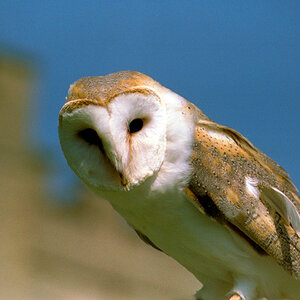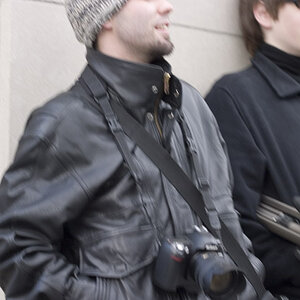Mystery
TPF Noob!
- Joined
- Nov 28, 2012
- Messages
- 42
- Reaction score
- 3
- Location
- Las Vegas
- Can others edit my Photos
- Photos OK to edit
I am a beginner photographer, and learning quickly that I may have bitten off more than I can chew. I am trying to shoot small products on white background for web and print use. I purchased 3 softboxes from Cowboystudio thinking I could use them instead of a tent for what is essentially jewelry photography. Here's my setup. It's a Cowboystudio 4500 watt, 3 softbox set. Each softbox has 5, 85 watt 5500k fluorescent bulbs.
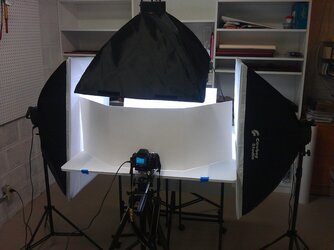
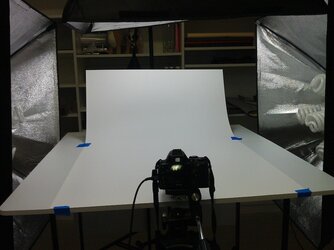
I used a white poster board as my background. A softbox is on either side of the mini cyc, and one softbox is on a boom over the top. I also have a poster board with a hole cut in it for the lens to bounce the light back onto the front of the product. My goal is to get the white background totally white, 255,255,255. I want the white background to shoot white on the camera to avoid extra post work because I need the background totally white for the final product shots. I have so many shots to do, I don't want to have to separate the product from the background, it will be way too much work.
I am shooting RAW at F22, 1/25, ISO 400 on a Nikon D40. White balance is on the sunlight setting to match the daylight kelvin rating of the bulbs. At those settings, it's easy to get white background on the final image as true white. The problem I am having is that the colors of the products are getting washed out. I am able to adjust contrast and brightness on the RAW image and get the product to have good color, but then the background loses its color. Here is an example of a photo I am shooting.
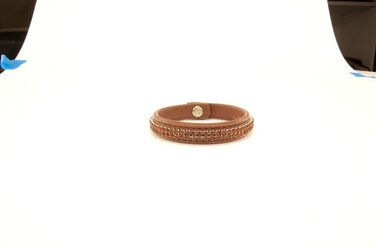
In this shot, the background comes out perfectly white. The problem is that the product is washed out. The brown on that leather should be a very rich, chocolate color. The color I am getting is nowhere near the true color. As I said, I am a beginner, so I am not only limited by my equipment, but also my experience.
I have researched on this for weeks, and I have been trying to figure out what lighting I need to buy to make this work. My thoughts so far are... I am thinking about changing the poster board background to a white lexan. I am thinking that I could light the white lexan from the back and the bottom to get the white background while putting less light on the product itself. When I turn the lights down or change my camera settings to faster shutter, the color comes out much better on the product, but I lose the true white backgorund. That's why I am thinking about a backlit background. What I don't know, is it the backlit background will still overexpose the image and wash out the color because of the contrast differences in the white and the brown.
I am willing to try just about anything. My budget is limited, but I have some money to spend. Any help on this would be greatly appreciated. I have learned that this white background is probably one of the hardest setups I could have used to get into this, but at this point I don't have a choice! I hope someone has some ideas, because I am all out!


I used a white poster board as my background. A softbox is on either side of the mini cyc, and one softbox is on a boom over the top. I also have a poster board with a hole cut in it for the lens to bounce the light back onto the front of the product. My goal is to get the white background totally white, 255,255,255. I want the white background to shoot white on the camera to avoid extra post work because I need the background totally white for the final product shots. I have so many shots to do, I don't want to have to separate the product from the background, it will be way too much work.
I am shooting RAW at F22, 1/25, ISO 400 on a Nikon D40. White balance is on the sunlight setting to match the daylight kelvin rating of the bulbs. At those settings, it's easy to get white background on the final image as true white. The problem I am having is that the colors of the products are getting washed out. I am able to adjust contrast and brightness on the RAW image and get the product to have good color, but then the background loses its color. Here is an example of a photo I am shooting.

In this shot, the background comes out perfectly white. The problem is that the product is washed out. The brown on that leather should be a very rich, chocolate color. The color I am getting is nowhere near the true color. As I said, I am a beginner, so I am not only limited by my equipment, but also my experience.
I have researched on this for weeks, and I have been trying to figure out what lighting I need to buy to make this work. My thoughts so far are... I am thinking about changing the poster board background to a white lexan. I am thinking that I could light the white lexan from the back and the bottom to get the white background while putting less light on the product itself. When I turn the lights down or change my camera settings to faster shutter, the color comes out much better on the product, but I lose the true white backgorund. That's why I am thinking about a backlit background. What I don't know, is it the backlit background will still overexpose the image and wash out the color because of the contrast differences in the white and the brown.
I am willing to try just about anything. My budget is limited, but I have some money to spend. Any help on this would be greatly appreciated. I have learned that this white background is probably one of the hardest setups I could have used to get into this, but at this point I don't have a choice! I hope someone has some ideas, because I am all out!


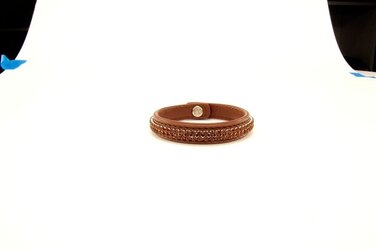
![[No title]](/data/xfmg/thumbnail/40/40284-f59f6230f0d5b9eacf977f8b0392f087.jpg?1619739407)
![[No title]](/data/xfmg/thumbnail/40/40286-86401b94de8b01bea8bb4ea154aaea0a.jpg?1619739408)
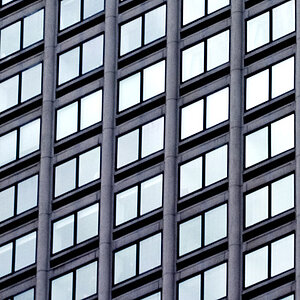
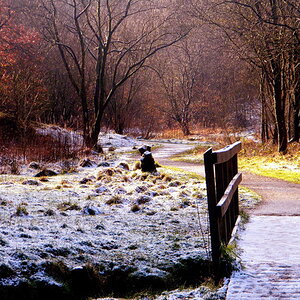
![[No title]](/data/xfmg/thumbnail/42/42257-4c4b35d60337b1b4ec661332486a33be.jpg?1619740066)
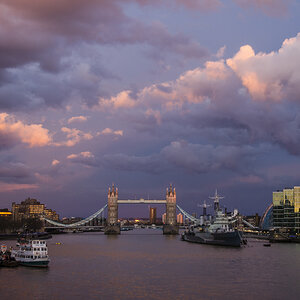
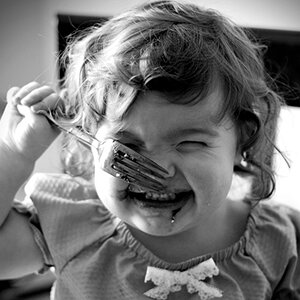
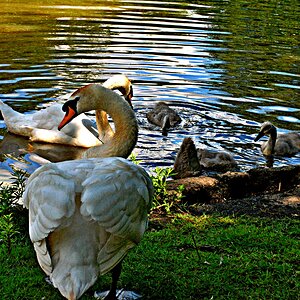
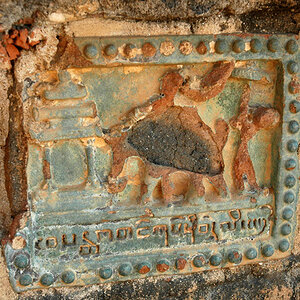
![[No title]](/data/xfmg/thumbnail/40/40285-2ce5915035c220ccb3485030863b62d0.jpg?1619739408)
